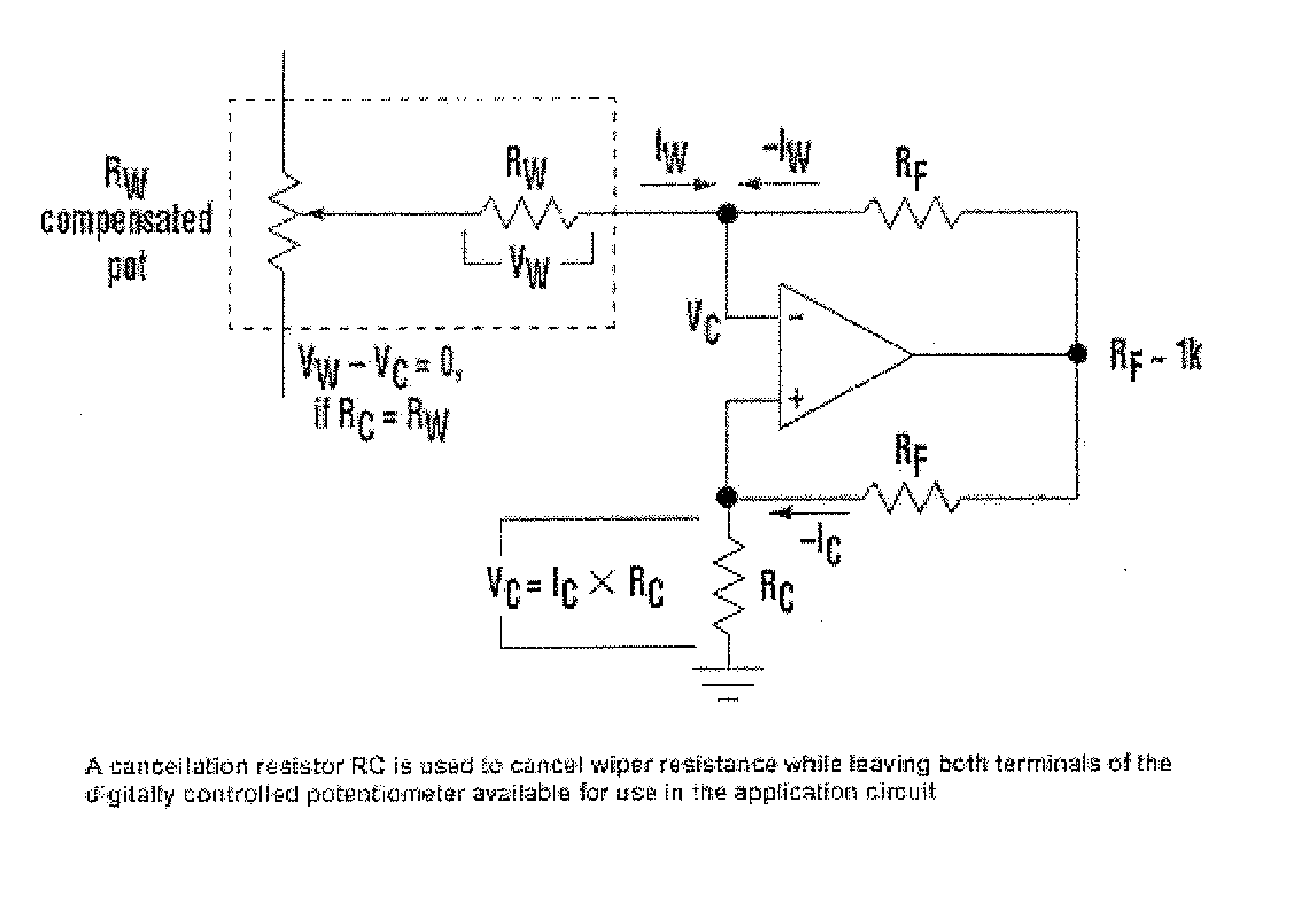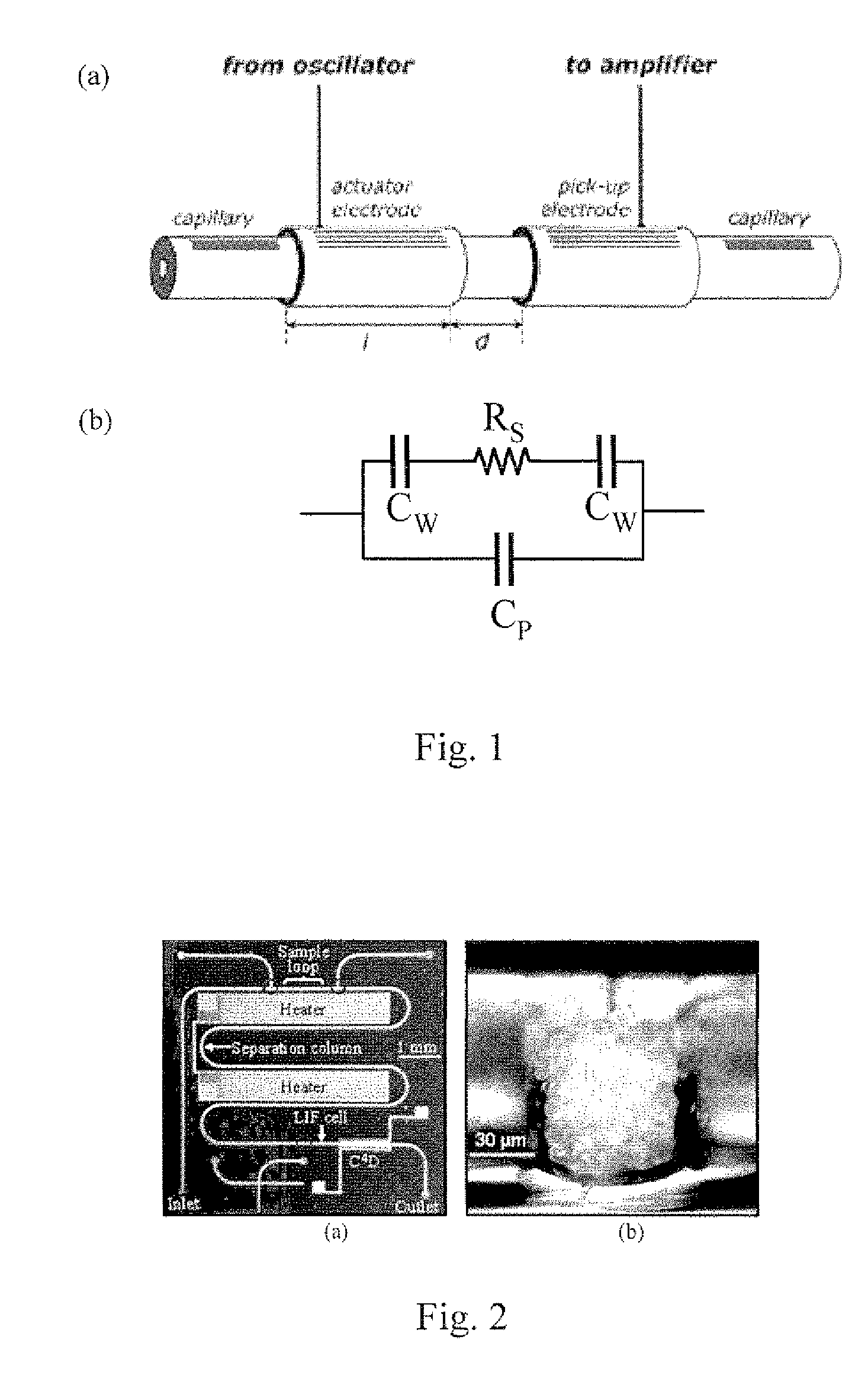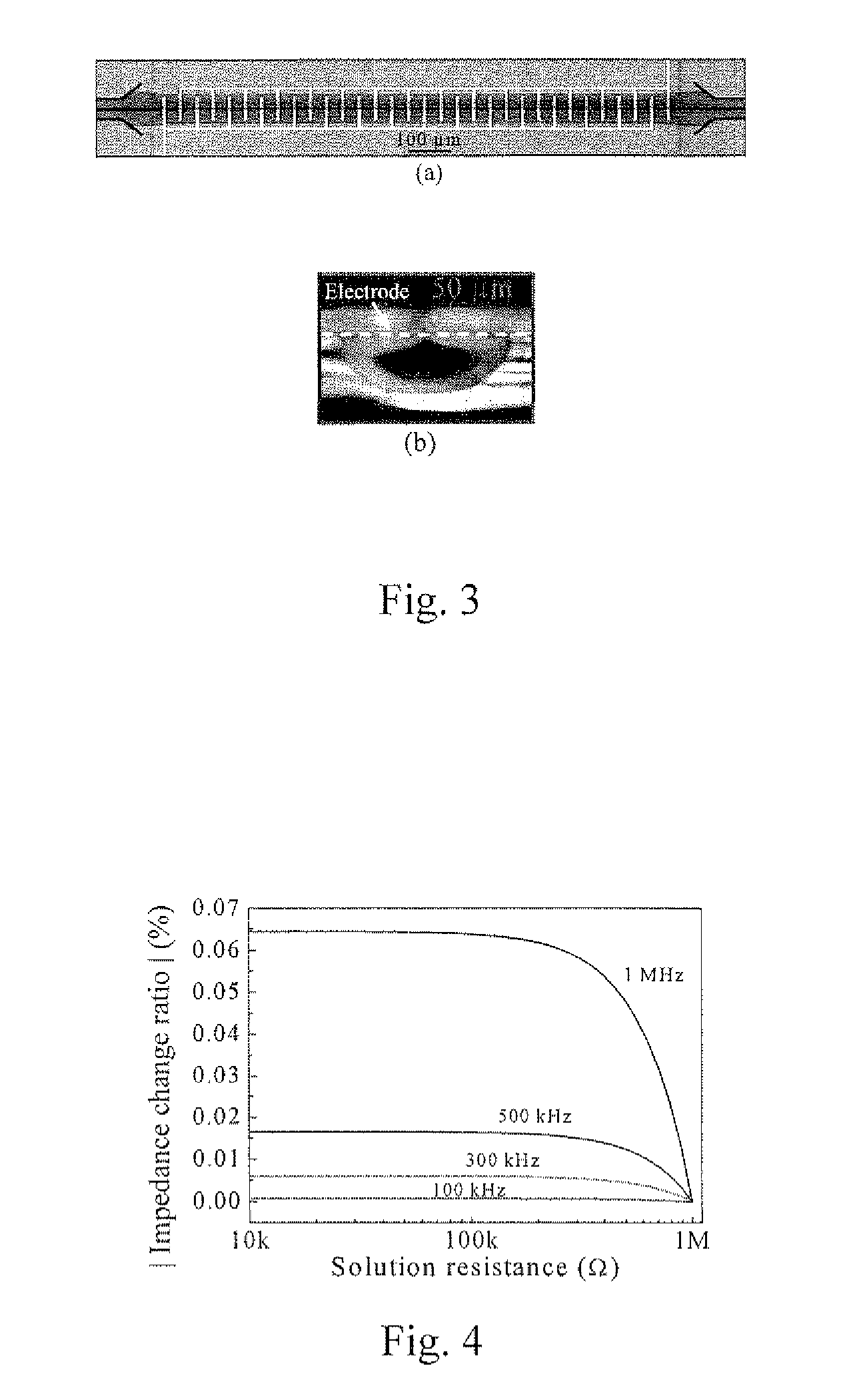Resonance-induced sensitivity enhancement method for conductivity sensors
a conductivity sensor and enhancement method technology, applied in the field of conductivity sensors, can solve the problems of reducing the sensitivity of the capacitively-coupled contactless conductivity detector (csup>4/sup>d), limiting the application of the conventional conductivity detector, and the decrease of the double layer capacitance of the electrode, etc., to achieve the effect of increasing the sensitivity of the capacitively-coupled contactless conductivity detector and enhancing the sensitivity
- Summary
- Abstract
- Description
- Claims
- Application Information
AI Technical Summary
Benefits of technology
Problems solved by technology
Method used
Image
Examples
Embodiment Construction
[0038] Capacitively-coupled contactless conductivity detection (C4D) is a technique used frequently in LC and CE. In the conventional method, the sensing electrodes are put outside of a flow channel, such as the separation column in LC, as shown in FIG. 1(a) to avoid electrode corrosion by the solution flowing in the channel, such as an electrolyte solution. In the equivalent circuit model of C4D, shown in FIG. 1(b), CW is the capacitance between the sensing electrode and the solution where the capillary wall material is the capacitor dielectric. CP is the parasitic capacitance between the electrodes. RS is the solution resistance between the electrodes.
[0039] The sensitivity degradation of conventional C4D is exacerbated when the sensor is built in micro scale devices such as those constructed using microfabrication technology such as MEMS. For example, FIG. 2(a) shows a temperature-controlled microchip HPLC (high performance liquid chromatography) system fabricated in the Caltech...
PUM
 Login to View More
Login to View More Abstract
Description
Claims
Application Information
 Login to View More
Login to View More - R&D
- Intellectual Property
- Life Sciences
- Materials
- Tech Scout
- Unparalleled Data Quality
- Higher Quality Content
- 60% Fewer Hallucinations
Browse by: Latest US Patents, China's latest patents, Technical Efficacy Thesaurus, Application Domain, Technology Topic, Popular Technical Reports.
© 2025 PatSnap. All rights reserved.Legal|Privacy policy|Modern Slavery Act Transparency Statement|Sitemap|About US| Contact US: help@patsnap.com



